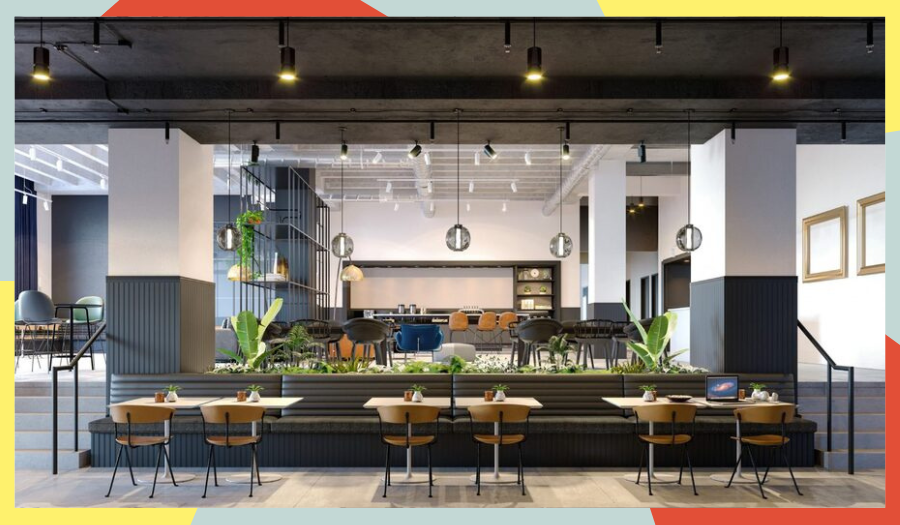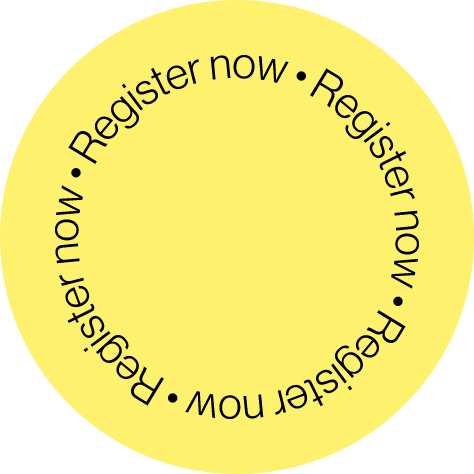“We're very much in a high-growth startup mode,” said Laurel Donaldson, Principal Design Strategist at Convene. “We’re now over 850 people and we’re constantly refining our current offerings while exploring the launch of new products”.
Convene is savvy to the reality that workplace design is evolving to meet changing consumer expectations. Across industries, strategists and designers are incorporating methodologies such as human-centered design to meet the needs of communities and entire cities. For Adam Winski, Principal Design Strategist, Convene bringing together varied perspectives and a shared set of values around putting stakeholders at the center of what the company does is paramount.
Is this Convene’s secret sauce? I spoke to Adam and Laurel to find out.
Alex Pavlou (Founder and Head of Growth, Bamboo Crowd, North America): Can you please introduce our readers to your team at Convene? What are the moving parts of your work and how does design and innovation factor in?
Adam: When I started at Convene 3 years ago, we were a 3 person Innovation team with responsibility for defining and bringing to new products to market, starting with Convene WorkPlace (our flexible workspace offering). Now, with the growth of the company our team has expanded to be one part of the broader Design Research & Brand Strategy team with a much wider set of responsibilities. In short, we are in charge of being the main voice of the customer and key stakeholders and defining the customer experience across physical and digital. Each of us comes from a slightly different background, representing everything from urban planning at the city and neighborhood level to interior design to business strategy.
Laurel: As a business, we’re constantly redefining, refining, and exploring new products. We’re starting to rethink what Convene can do as a space-as-a service provider, partnering with landlords and offering a turnkey solution that leverages our design services and hospitality standards. Our team, in a way, is riding with the uncertainty in the shared office market. In our own rapid evolution as a company, we evaluate what we’re doing now while we try to foresee where the world is going.
Alex: So, how do you set priorities for different initiatives and opportunities at Convene?
Adam: In collaboration with Convene’s Chief Design Officer Joyce Bromberg who leads our group and the broader executive team, we prioritize based on where we can have the most impact on our business. As one example, we just wrapped up a project to understand what people value in a modern workplace experience. We surveyed close to 400 people, 200 current members and 200 non-members, in major cities across the U.S. One outcome was deeper understanding, from the building itself and where it’s located, to the actual work suite and the furniture, to space types and amenities. It gave us a sense of what is valued and what matters to people. As just one small example, we anticipate that in five years, more people will be biking to work so access to showers will be more relevant. On top of this, we work closely with our product teams to support their priorities.
Alex: In our current co-working space, no one has never asked us what we'd like! How do your members react to this? I’m interested because there’s a parallel need among many cities and communities for more space to collaborate or to encourage more local businesses to flourish.
Adam: Sadly that isn’t surprising, although there is a misconception that people are going to be annoyed if you reach out to them for their opinion. What we've seen is that people are thrilled to be asked their opinion. It's been fantastic to see the engagement, excitement and interest that we've gotten from our customers through this process.
To understand our customers’ perspectives, we do quarterly NPS surveys, as well as after every big meeting and event. Last year, we also created a series of key stakeholder and customer advisory councils that gather quarterly for participatory design workshops. For these, we work closely with our product and technology teams to surface the questions that are most top-of-mind.
Alex: So, in some ways, you’re a type of gatekeeper to ensure the business remains user-centered while looking to the future and potential trends.
Adam: Yes. I think it’s looking at what the world might be like in five years but also what's needed right now. We aim to understand the specific needs of a city or even a neighborhood within a city. In combining all of our different perspectives, we’ve developed a decision-making framework that is incredibly valuable and a really powerful alignment and shared language tool.
Laurel: A key part of that framework is also a somewhat traditional cost-benefit analysis. We’re able to say, Okay, this is what we're hearing from the customer, here’s how much value our users would find in this product intervention, here’s how expensive and complex it would be to implement, and here’s the implication for our current and future brand differentiation. And then we’re able to make a recommendation to company leadership and our Product colleagues.
I think that’s the crux of the challenge for innovation teams whether they are working at a consultancy or in-house. Generally, people are resistant to change. It’s our job to paint the vision and how others play an important role within this.
Adam Winski, Principal Design Strategist
Alex: Moving big, new ideas through the business is a challenge that many in-house innovation practitioners struggle with. How do you work with your teams? How do you implement change if there’s a bit of uncertainty around the role of innovation within an organization?
Adam: I think that’s the crux of the challenge for innovation teams whether they are working at a consultancy or in-house. Generally, people are resistant to change. It’s our job to paint the vision and how others play an important role within this. Equally as important is creating the experiments and prototypes to build up a body of evidence to show people that ideas that may seem crazy have promise.
Alex: Within that framework, is your methodology based on human-centered design frameworks or do you move outside of that, depending on the project?
Laurel: It's been interesting integrating more data-driven insights into our research at Convene. A lot of our Foresight work is based in traditional human-centered design frameworks, though we’re always thinking about both the qualitative and quantitative components of a project.
Adam: We’re always keeping ROI top of mind. A powerful approach has been to bounce back and forth between quantitative and qualitative research and use one to inform the other. For example, with childcare or certain types of food and beverage preferences, you can only gain so much insight from a survey. So now, we take some of the more controversial ideas and dig more deeply into those questions. We’re working with other teams to both prototype and test new offerings while maintaining and protecting the brand.
Alex: Where do you see the industry moving and what is Convene’s place in it?
Laurel: We’re becoming more of a space platform, or a portfolio of different “templetized” commercial real estate products and partnership models that can meet the distinct needs of different buildings, landlords, and also neighborhoods. I think we’re living in an era where cities have become increasingly polycentric, with multiple central business districts and nodes of density, which drives the integration of work, life, and play – something people have been talking about for years. This doesn’t have to occur in a single piece of commercial real estate, but rather, how can we work with multiple landlords to deliver new spaces and experiences in existing buildings, which also serve the needs of a whole neighborhood?
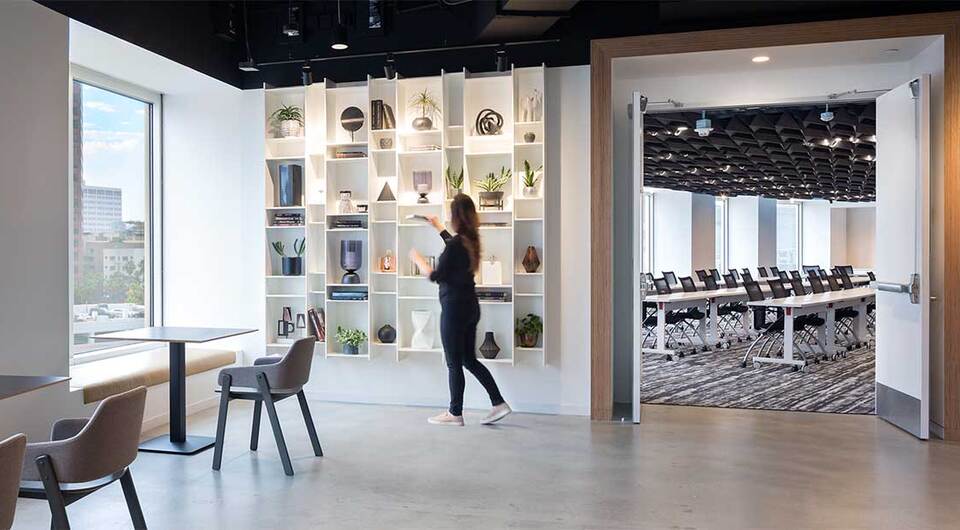
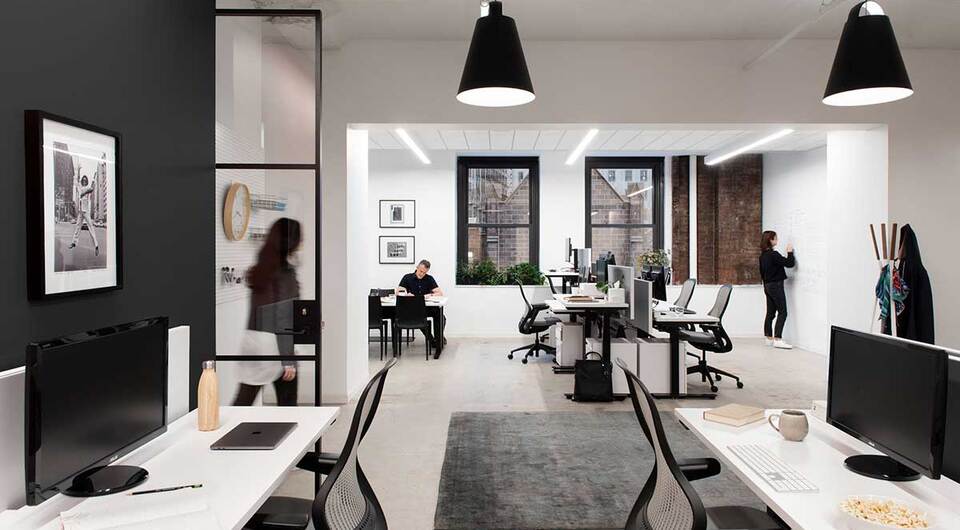
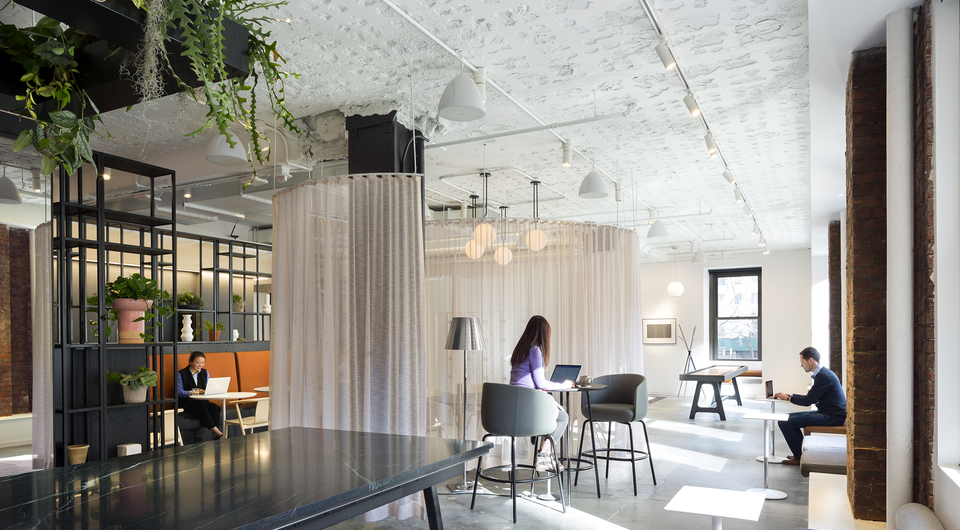






Alex: You’ve just launched in London, a huge city with its own public transportation challenges. Many companies are increasingly flexible about people working from home. Bamboo Crowd even has a few clients whose product design teams are totally remote. There are challenges but, today, talent really can be based anywhere, even outside of the city that the company is based in.
Laurel: Right. Although we believe that people still need workplace community and opportunities to gather, even if it's in a residential district.
Adam: I think the types of problems that companies are grappling with today are only going to get more complex and ambiguous. Even as people are working remotely and companies are increasing their flexibility, there will also be a more pronounced need for people to come together.
To build on the polycentric city future that Laurel was talking about, you can focus on neighborhoods or communities, but even from our founding 10 years ago, the original thesis was, "What if we ran an office building like a hotel?”
Today, Convene isn't just amazing for the members who work in the office . The idea is to transform the experience for the entire building. For example, you can order from Convene's kitchen directly to your office, almost like room service in your office. At our 530 5th Avenue location, we've partnered with Eden Health to provide primary care and telemedicine to anyone in the building who want to sign up; we know that convenience is often one of the biggest barriers to seeking care. Or, with Hydra Studios, with its workout space, Peloton bikes, and high-end locker rooms, for which other people in the building can get a membership. You can start to get a glimpse into the future of what we call a Convene-enabled building.
Alex: Convene is at an interesting juncture in a marketplace that is changing on many levels. Last year, New York City passed the Climate Mobilization Act, part of which require buildings 25,000 square feet or larger to reduce their carbon footprint by 40 percent. Adam explained that the move is causing building owners to think differently, to consider holistic building lifecycles for the first time. That’s good for Convene, because they want their spaces to serve as hubs for 10 or 15 years at a time, or more.
Convene’s secret sauce has several key ingredients: a deep and diverse team, a user-centric, forward-looking focus driven by data and customer insights, and a bold but basic vision. “We don't just want to go into one space, we want to be a building partner. So, it’s not just bringing the hospitality experience to the entire building, it's actually bringing holistic sustainability and betterment initiatives to the entire building.”

